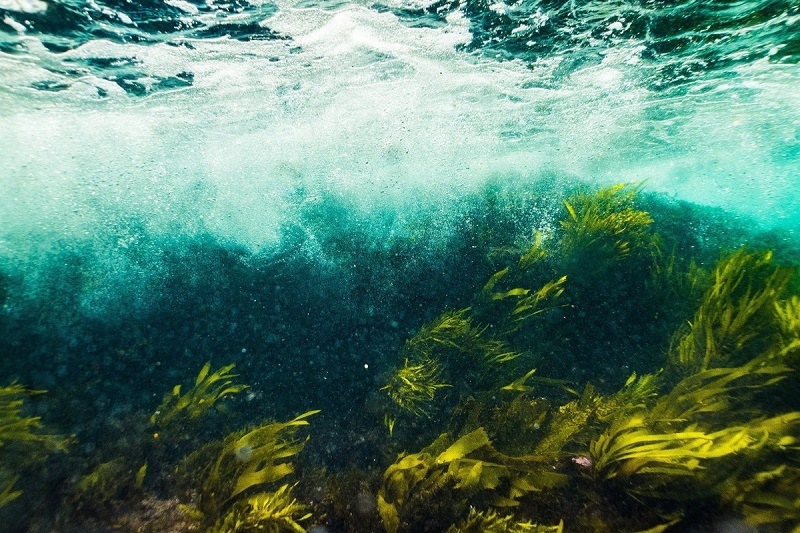
TREES UNDER THE SEA: HOW KELP FORESTS GROW UNDERWATER
When you consider woods, enormous, swaying stands of kelp likely are not the first thing come into mind. And while kelp is not technically a shrub, scientists predict substantial growths “kelp forests” since they form dense groupings, tower over the sea ground, and execute a number of the exact functions that conventional woods do. And they are not as important — or endangered — compared to their terrestrial counterparts. In honor of World Oceans Day, we are sharing everything . Get your ski gear ready, since we are diving deep!
So, what exactly IS kelp?
The brief answer? A number of seaweeds. The (slightly) more response? Large brown algae which live in cool, comparatively shallow waters near the shore. They supply nourishment and houses for biodiversity exactly like terrestrial woods.
And how can it grow?
Reliant on light for photosynthesis, kelp grow together rocky coastlines at depths ranging from 6 to 90+ ft. Tiered just like a temperate forest with a canopy and many layers beneath, kelp forests do finest at chilly, nutrient-rich upwellings (regions where the sea layers overturn, bringing cool, healthy bottom waters into the surface). And like trees, they’ve root-like “anchors” known as holdfasts which stop them from drifting away. But like trees, their “origins” do not burrow deep beneath the surface, but instead grip tightly onto the sea floor.
Kept afloat by pneumatocysts (gasoline bladders), kelp grow quickly toward the sea’s surface — and once we state quickly, we mean it! Though their normal growth rate is approximately 10 inches every day, giant kelp can grow around 2 feet in perfect conditions. Bull kelp, yet another frequent selection, develops 4 inches per day — that is still fairly impressive if you ask !
A recurrent, Giant Kelp can live for up to seven years when it is not uprooted by a storm or devoured by starving sea-dwelling herbivores. Bull kelp, a yearly, goes through its life cycle in only 1 year, but both possess a two-stage growth trajectory.
Initially, they exist because spores, published by the millions with their own parent kelp, sporophytes. These spores grow into miniature female or male gametophytes, which may create either eggs or sperm. After fertilization occurs, these free-floating embryos quickly hold the sea floor and grow into adult plants.
Home sweet home
Forming a dense barrier between coastlines and harmful waves, kelp forests harbor a greater diversity of plants and creatures than any other sea community. Providing shelter and food to tens of thousands of marine mammals which range from shellfish to gray whales, they are extremely important to sea ecosystems.
Some species utilize them spawning grounds, and many others remain to raise their young from the comparative safety there. We state comparative, since sharks and other marine mammals search from the long corridors which sort between rows of plants.
Trouble in heaven
Understanding that kelp can grow around 2 feet each day, you may believe that they’re virtually indestructible. But sadly, that is not true with this unbelievable underground ecosystem. See, like you enjoy pizza, sea urchins LOVE kelp and will consume through a whole forest right away.
And regrettably, when the previous kelp strand was cut , big herds of sea urchins react to the anxiety of starvation by getting growing and developing bigger, stronger teeth. These brand-new teeth permit them to crunch through virtually anything in their course, which just compounds their harmful influence. And after items have progressed to the stage, there is virtually no prospect of kelp returning again.
A remarkable occurrence of marine ecology, “urchin barrens” happen when their inhabitants grow to these outstanding densities that vegetation on the full seafloor is annihilated, leaving behind an environmental wasteland. And since they collect and multiply, a nearly impenetrable barrier is shaped, which prevents anything else from coming back. Regrettably, once recognized urchin barrens will last indefinitely.
Is there hope?
It is different. While there’s very little expectation for kelp forests which have been annihilated and turned to urchin barrens — or even for the ones that grow in quickly warming seas — scientists are exploring and experimenting with various strategies to help for a while. And what they have found is the sea otters would be to kelp forests what wolves would be to Yellowstone.
Because as it happens, sea otters adore urchins equally as far as urchins love kelp! And when left alone, they will gladly maintain the urchins in check. But when they fall, urchin populations burst. Because of this, sea otters are considered a keystone species (like the rock near the peak of an arch which averts the other stone from falling down, keystone species stop the collapse of whole ecosystems) in kelp forests. Another species which likes to float on sea urchins? Rock lobsters.
So, there you have it everything you did not know you had to find out about kelp forests! Next time you see the shore, keep your eyes peeled — if you are lucky, you may just place their attribute tendrils swaying gradually with the tides.